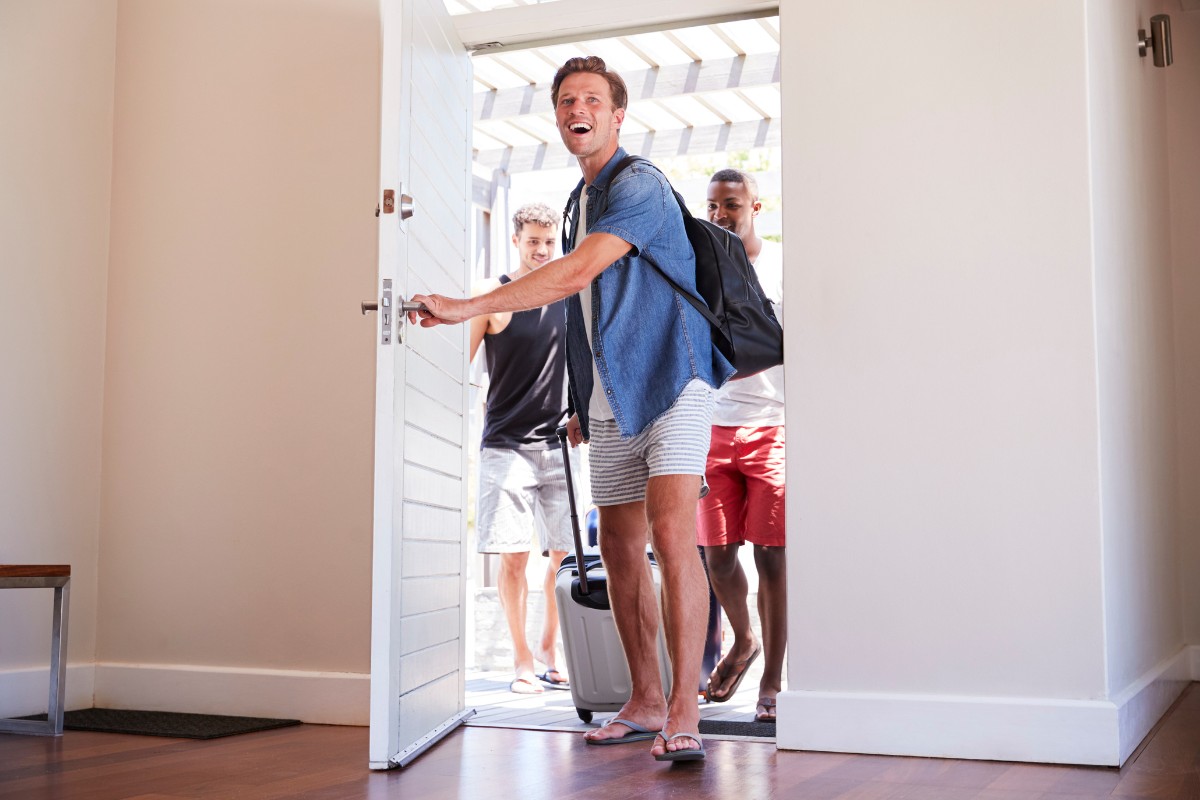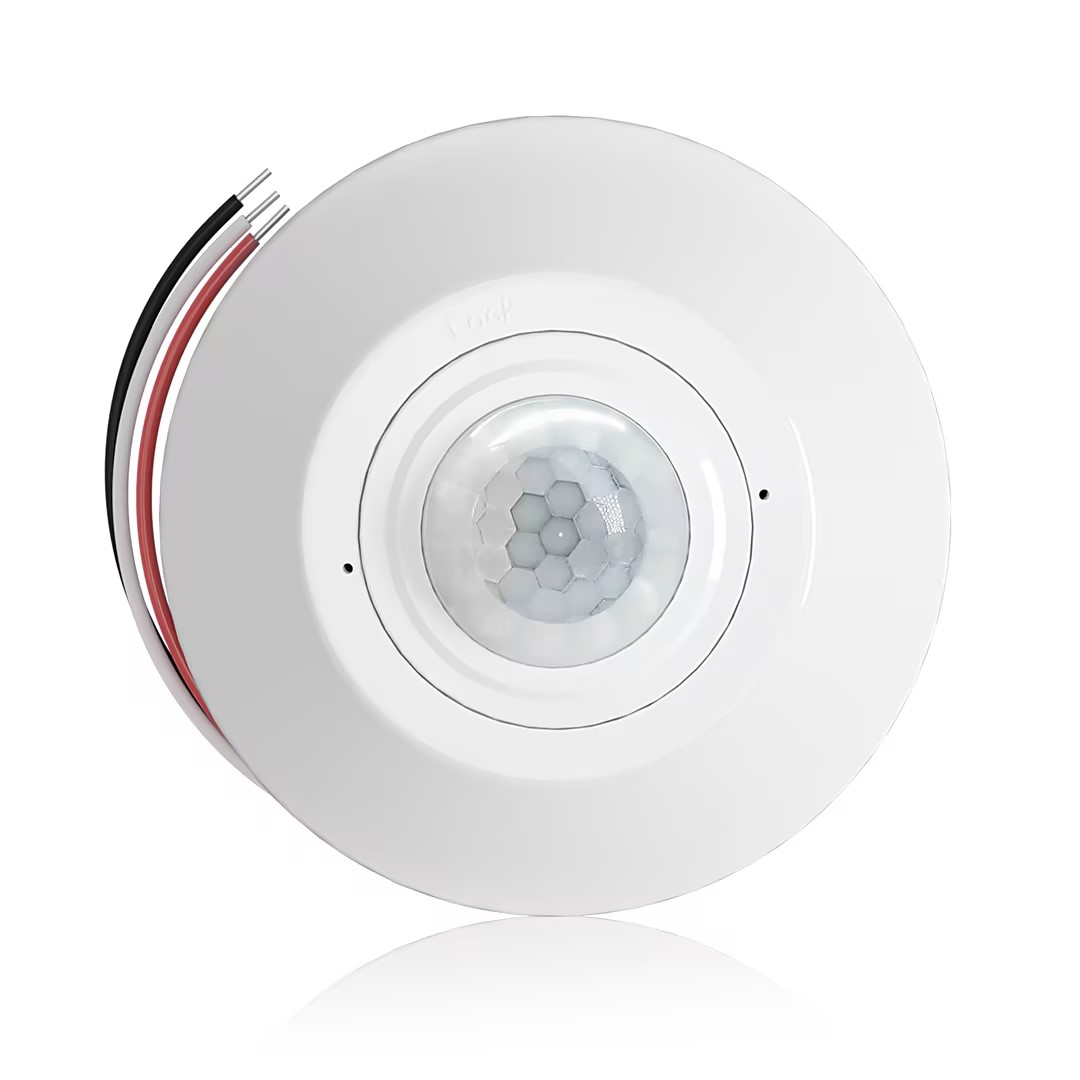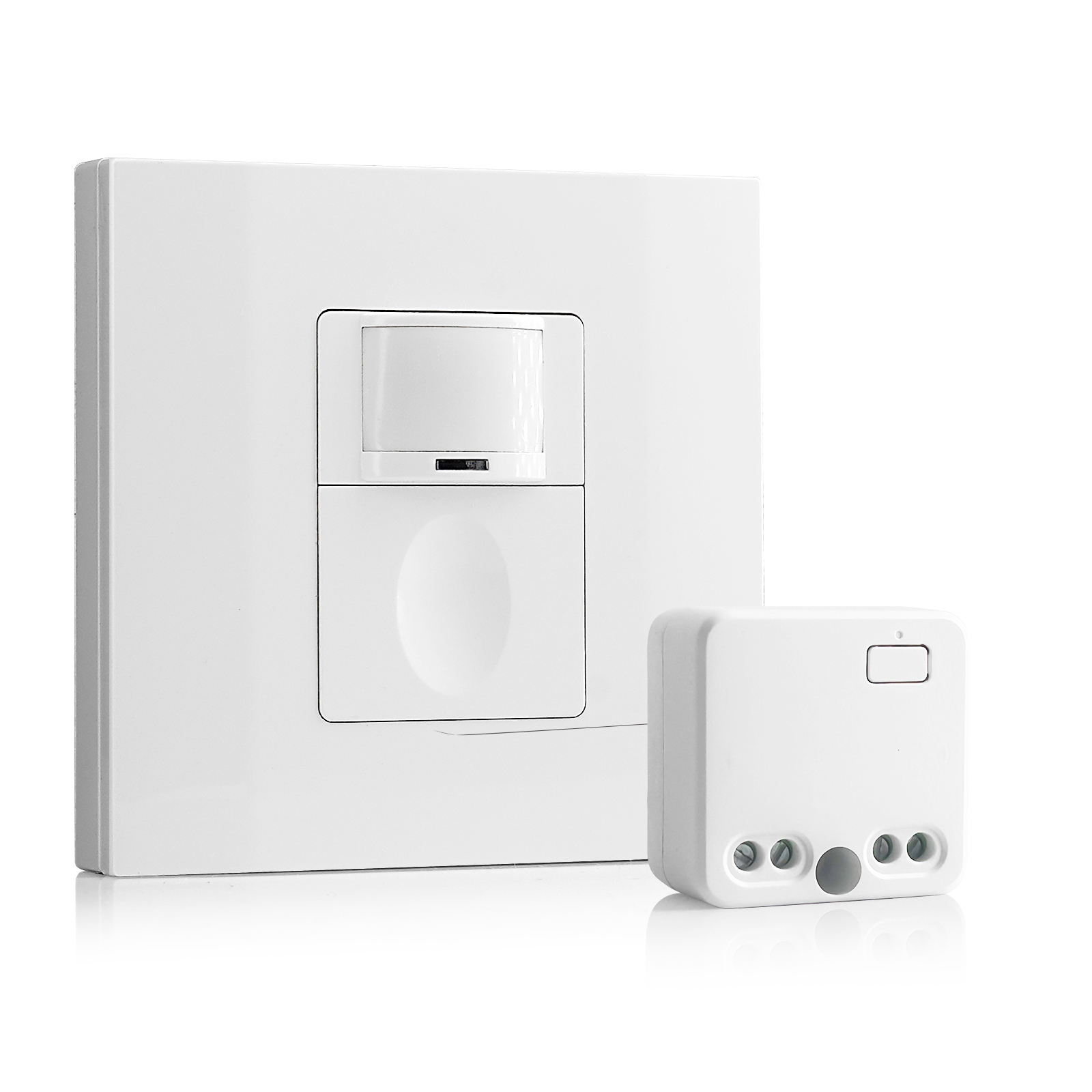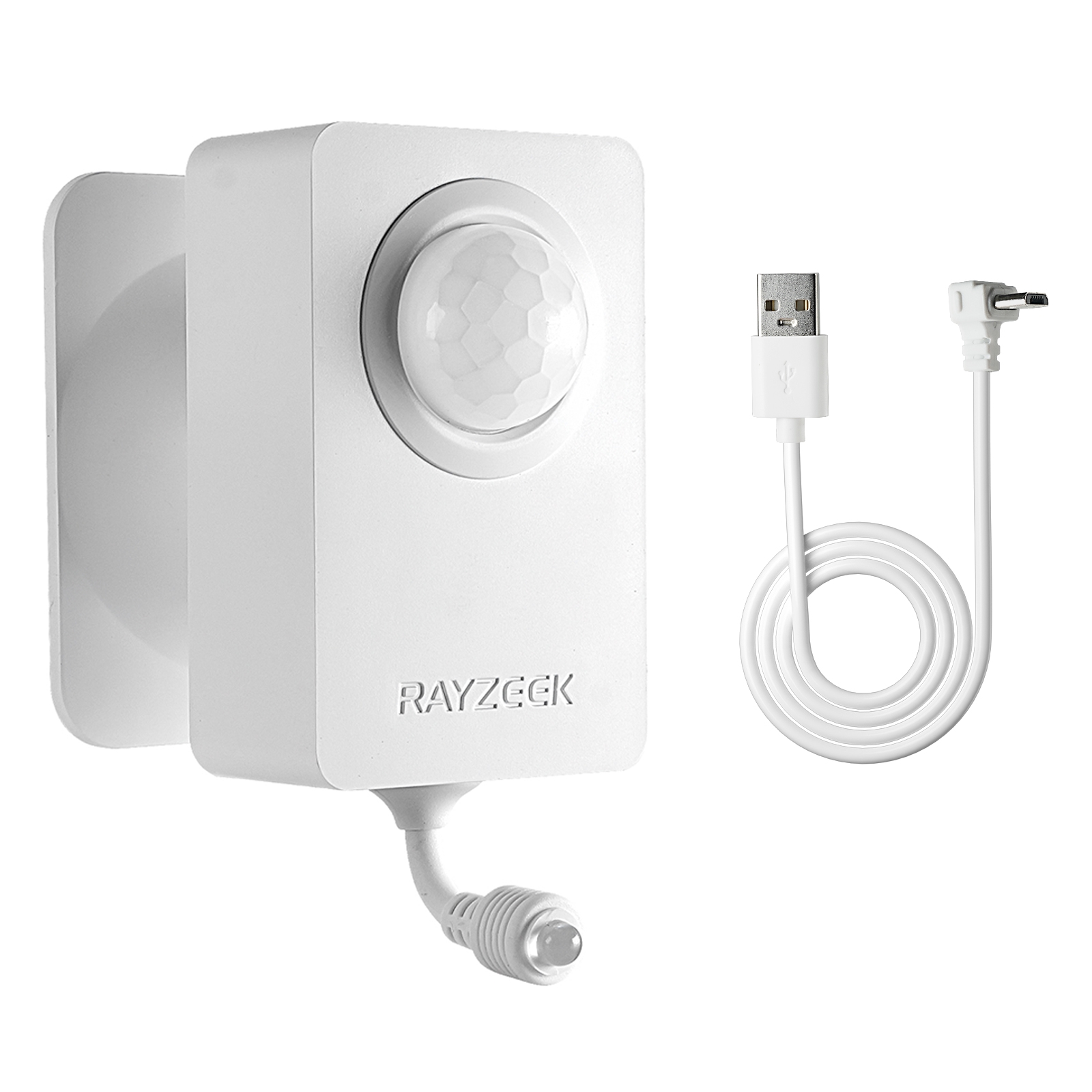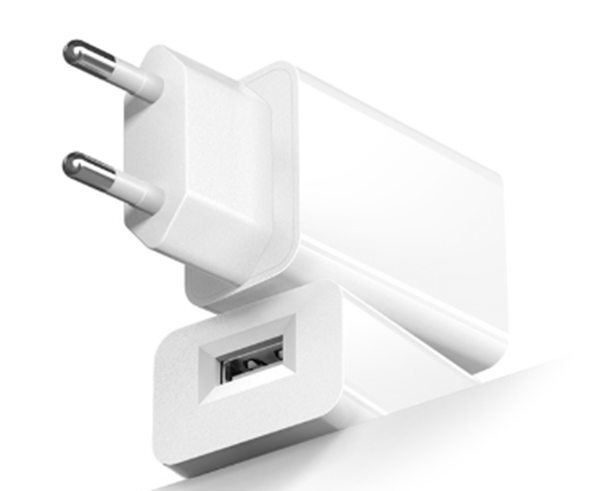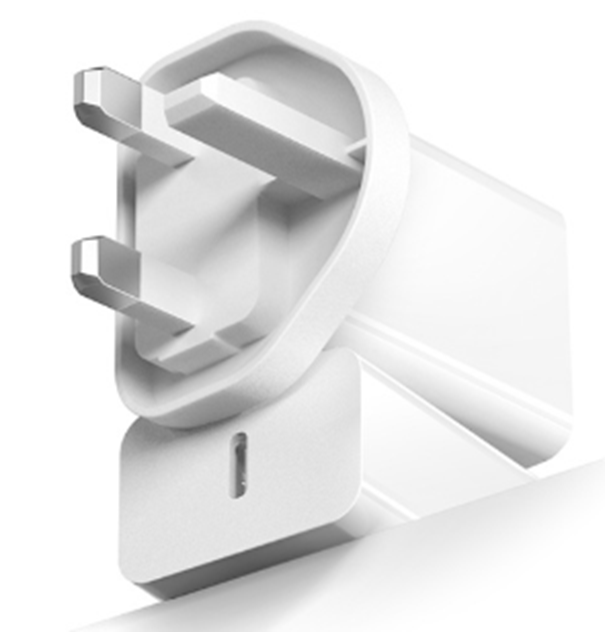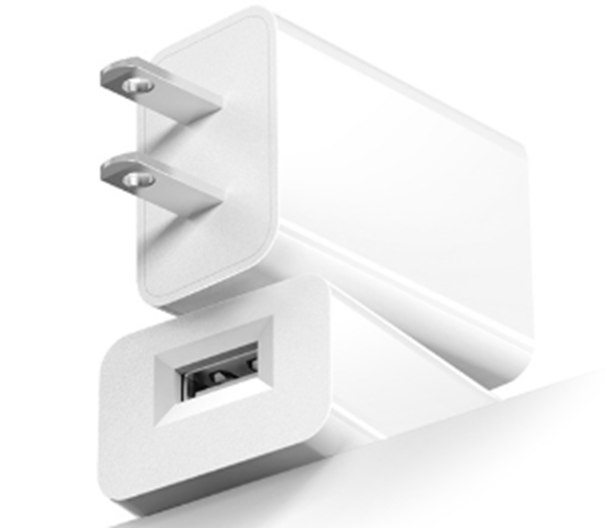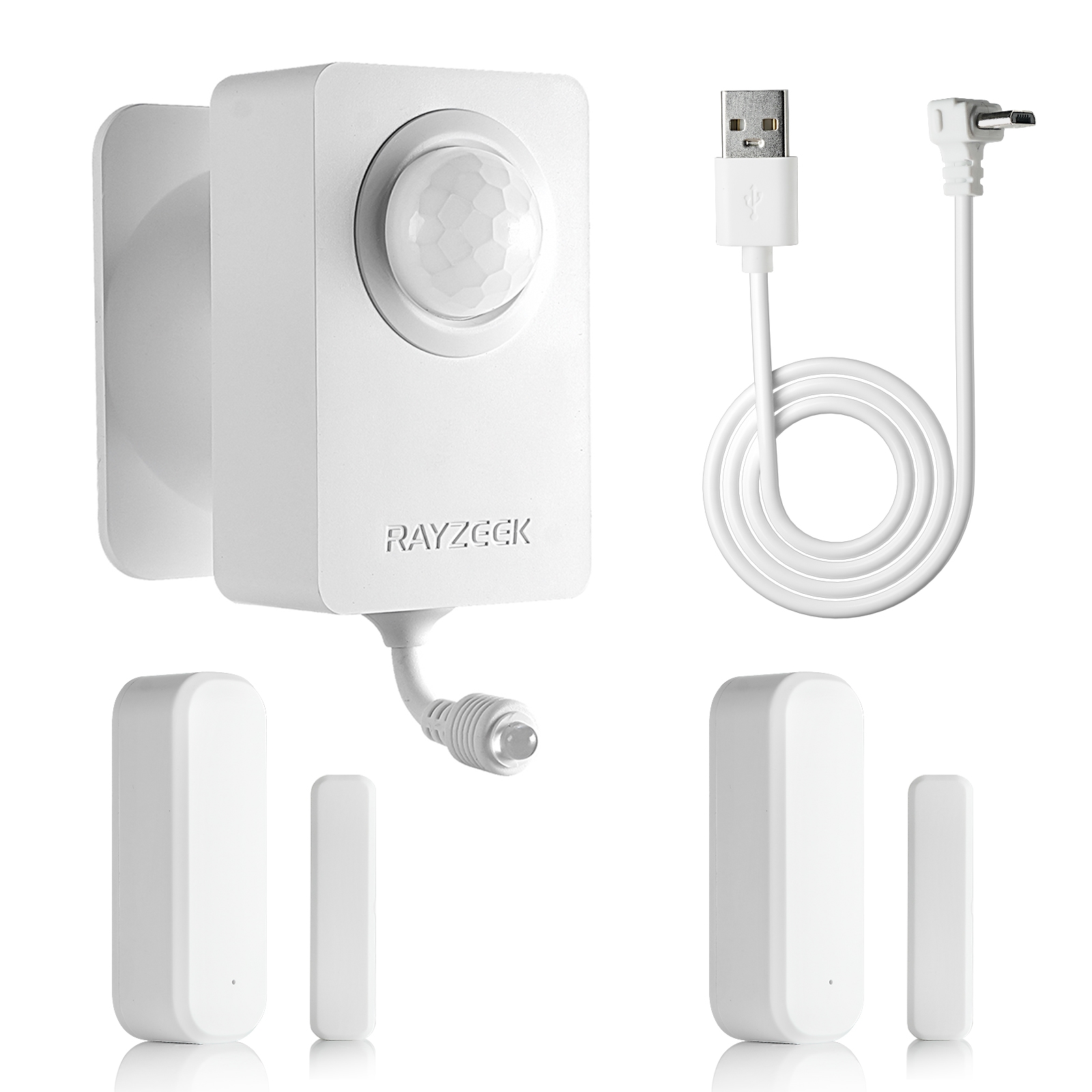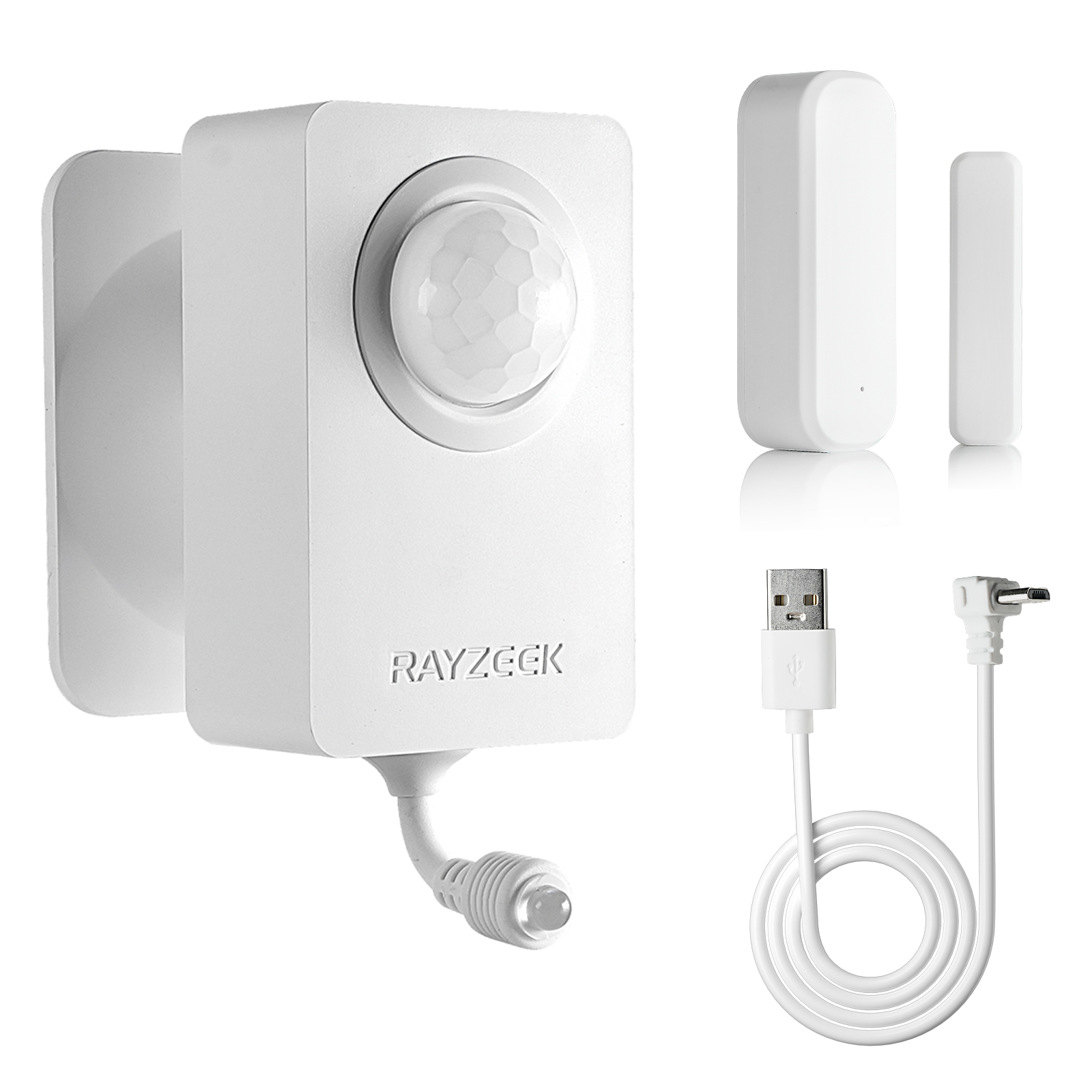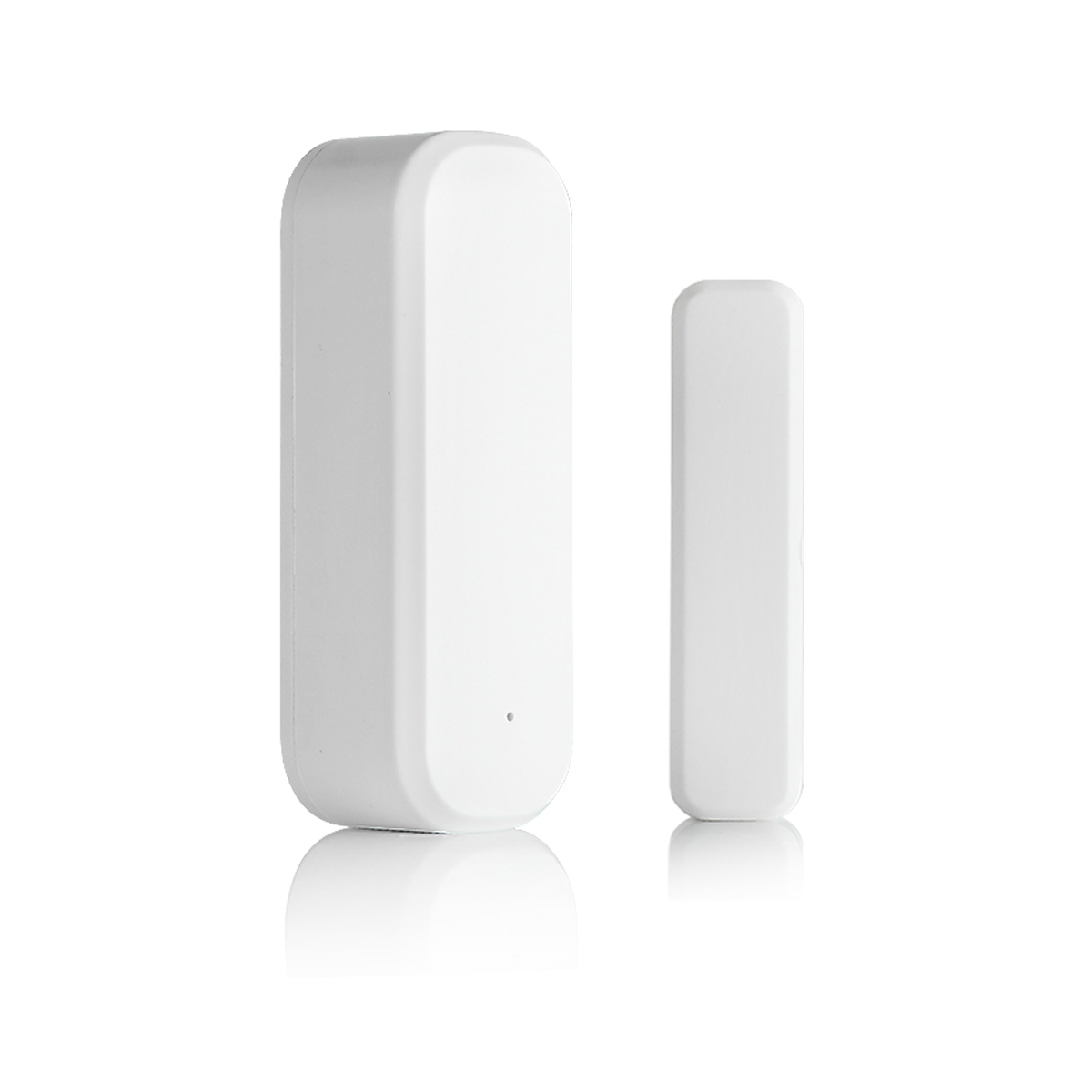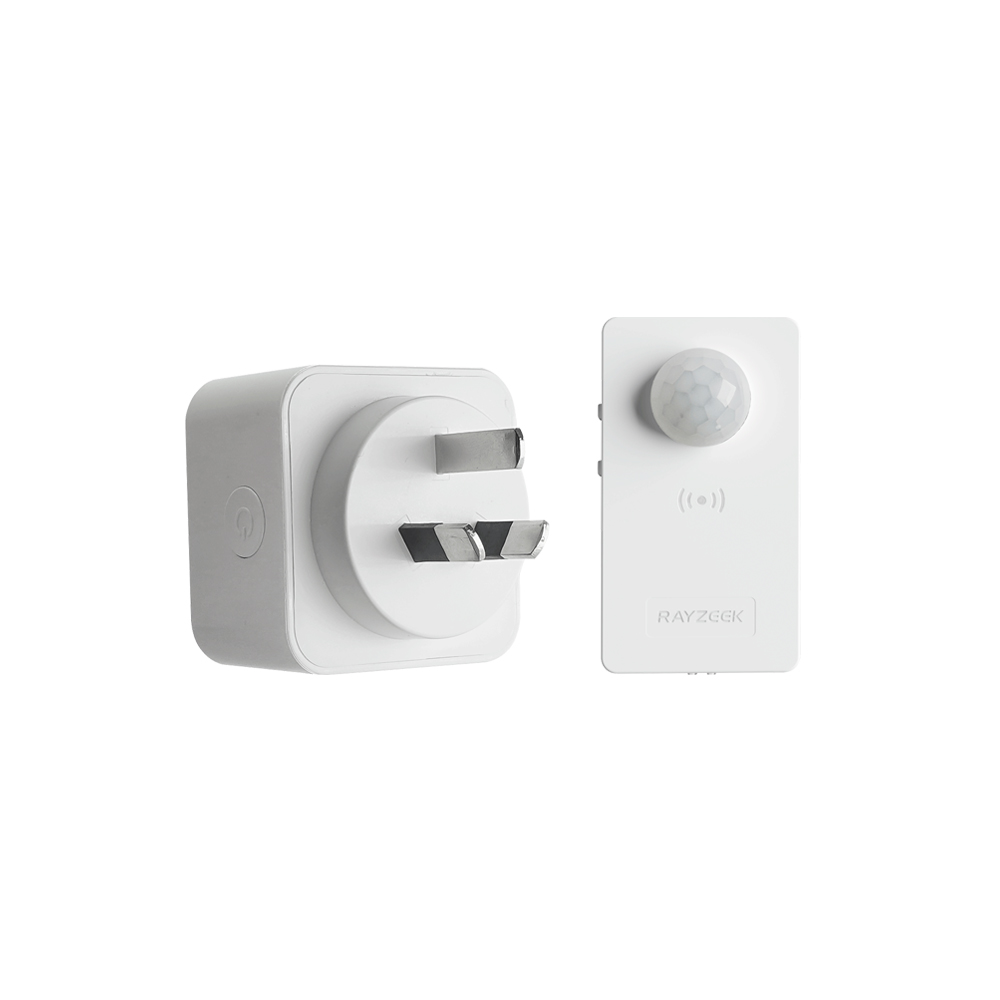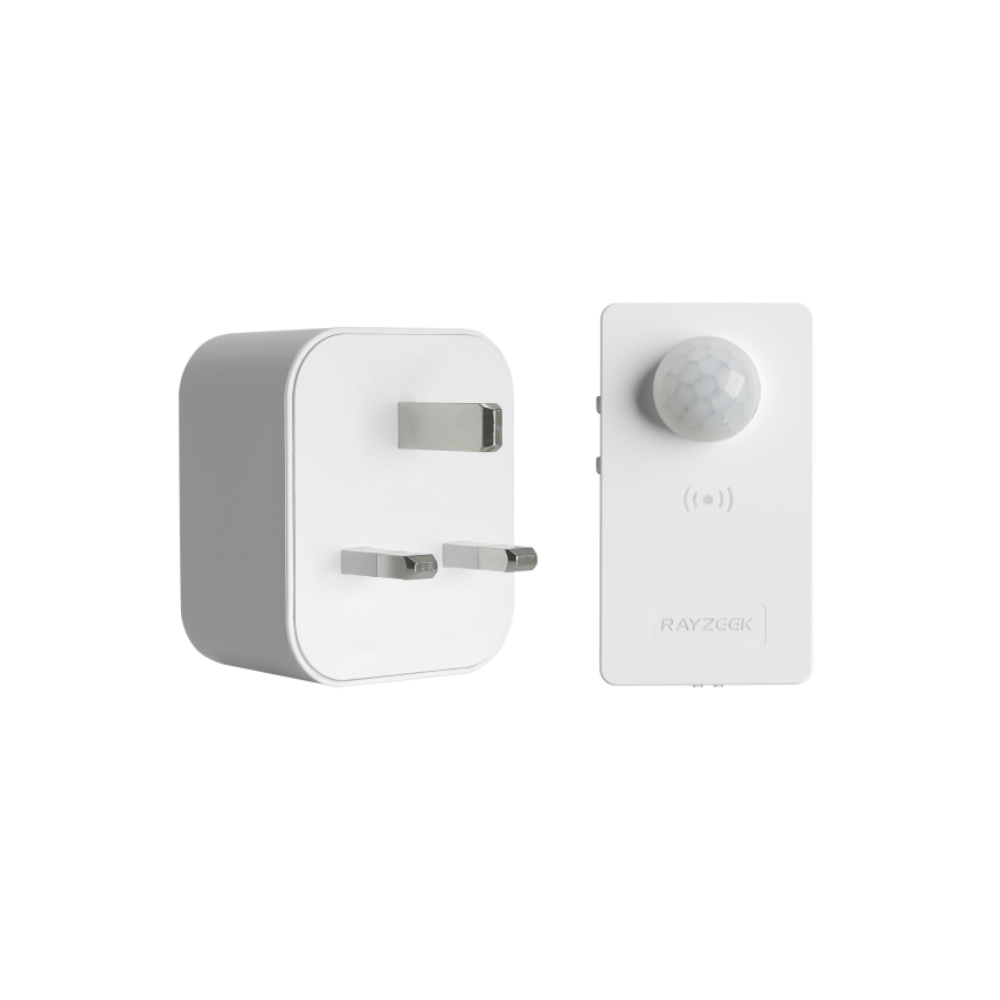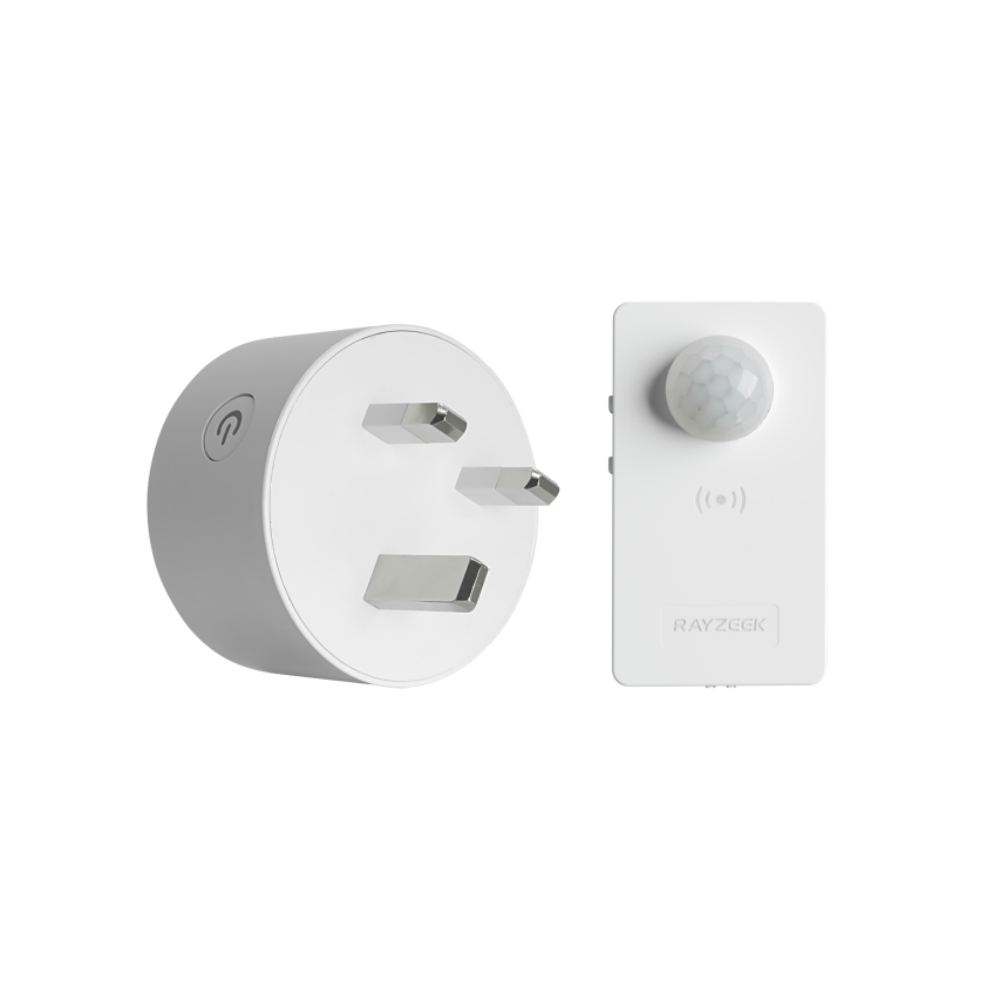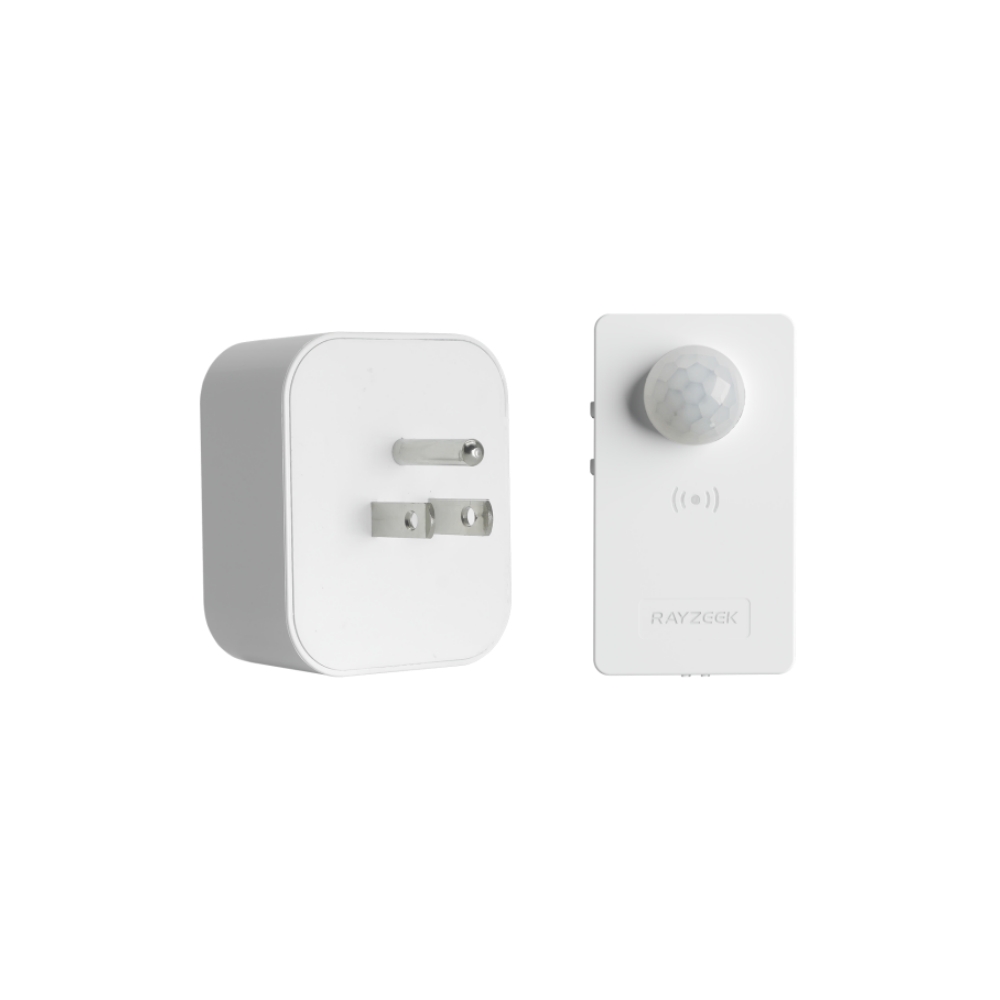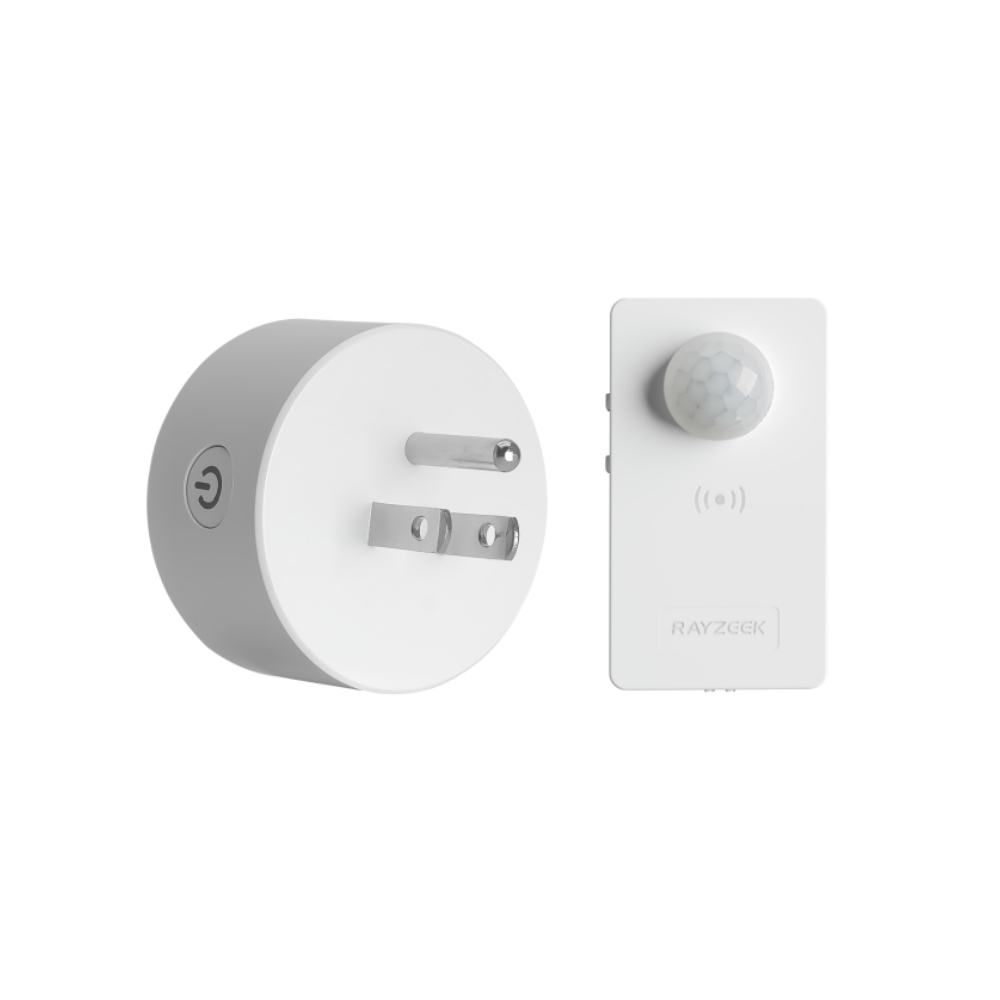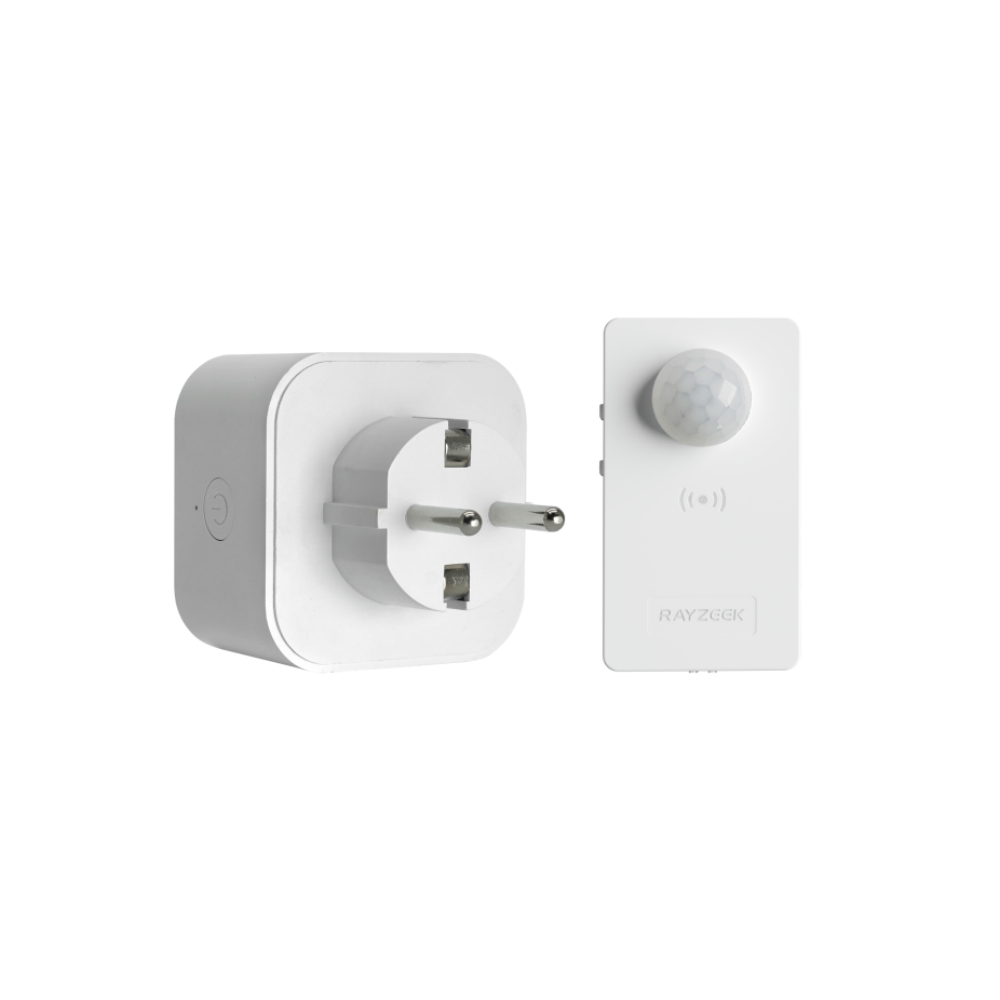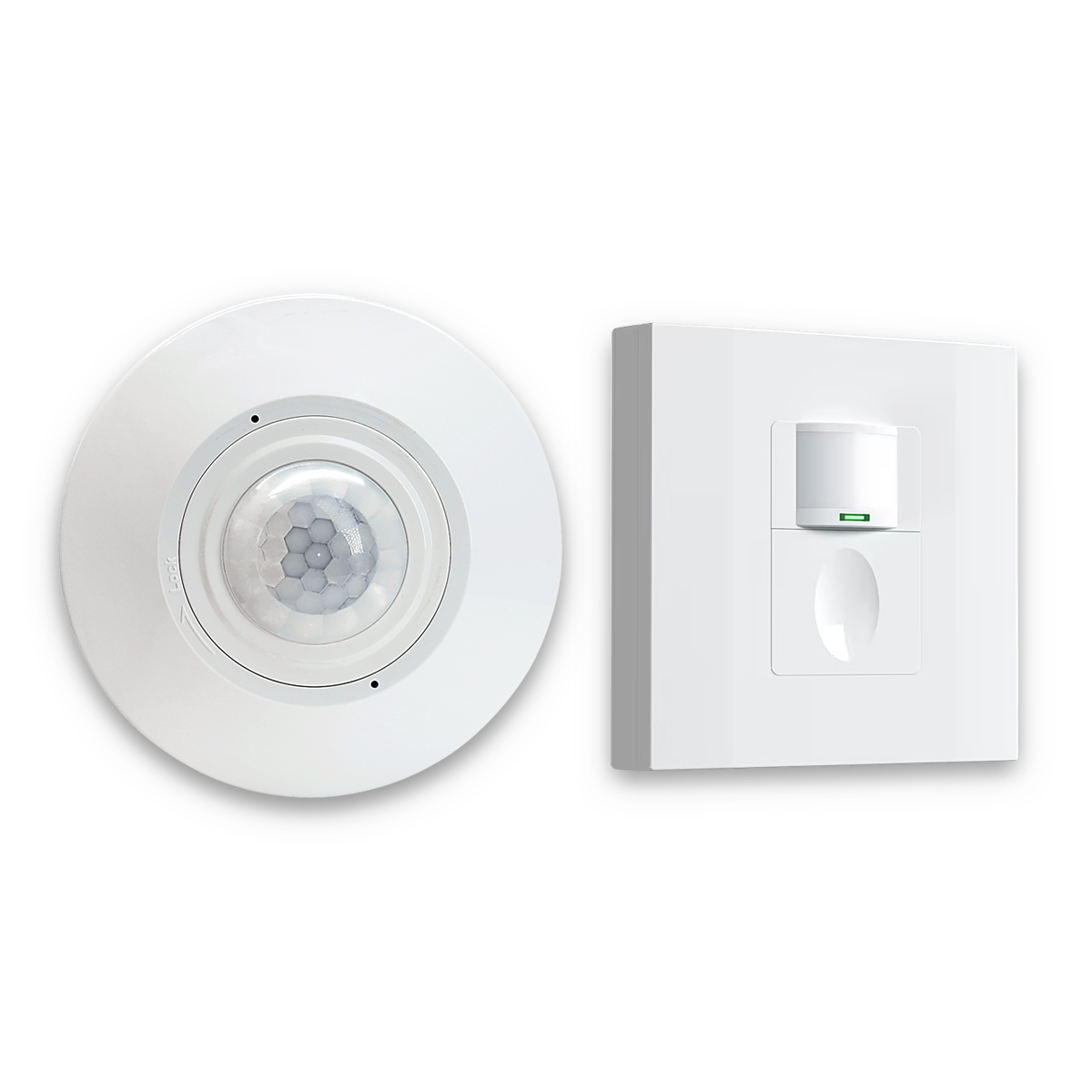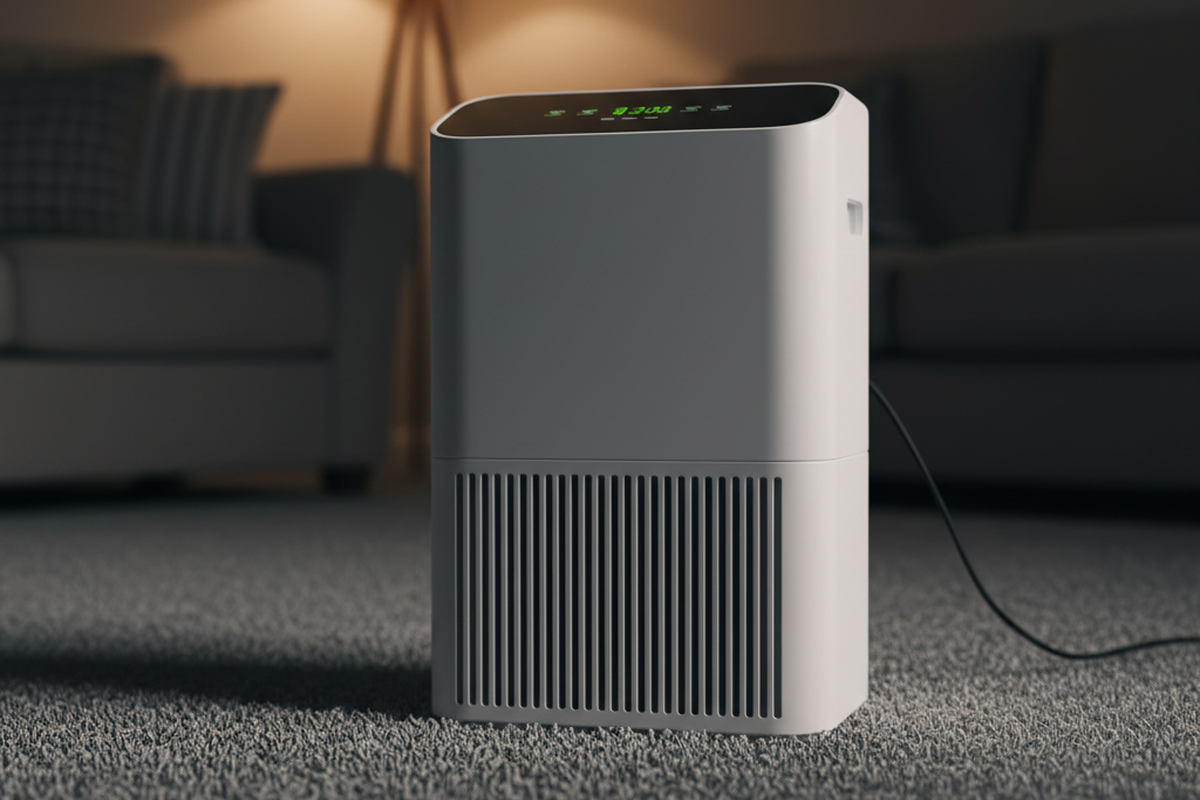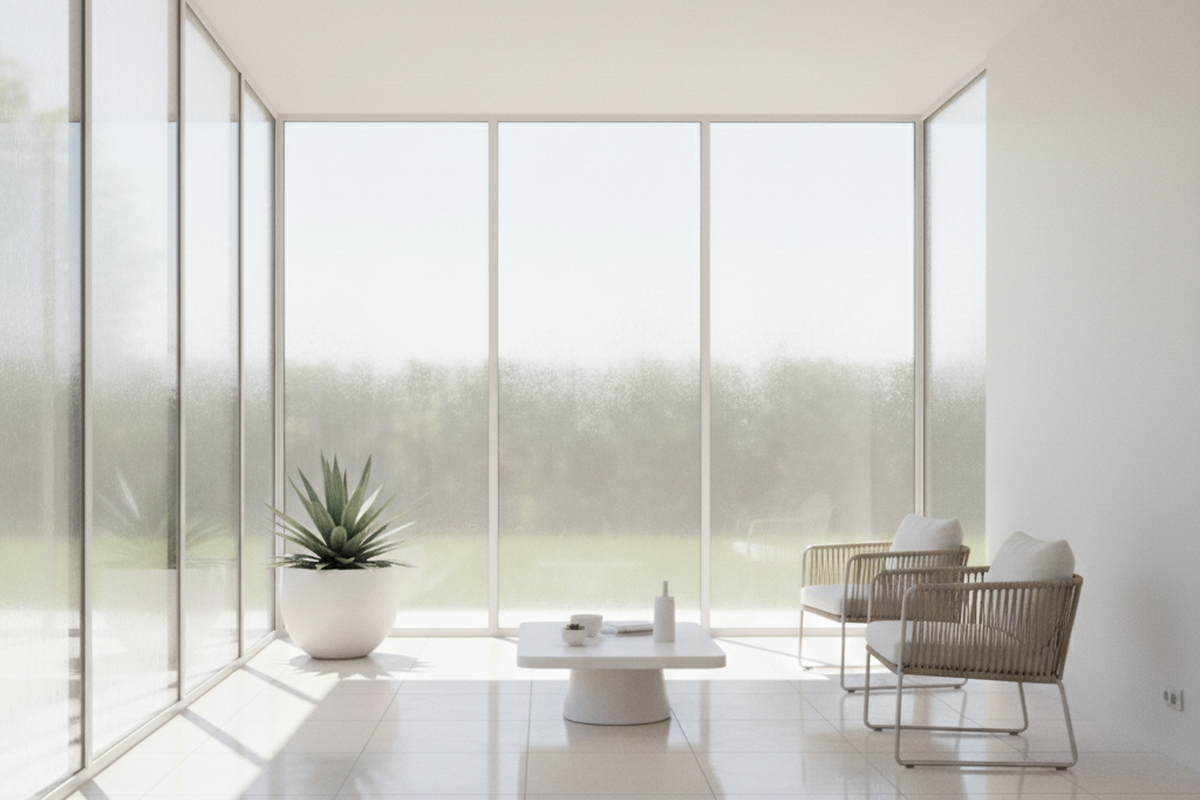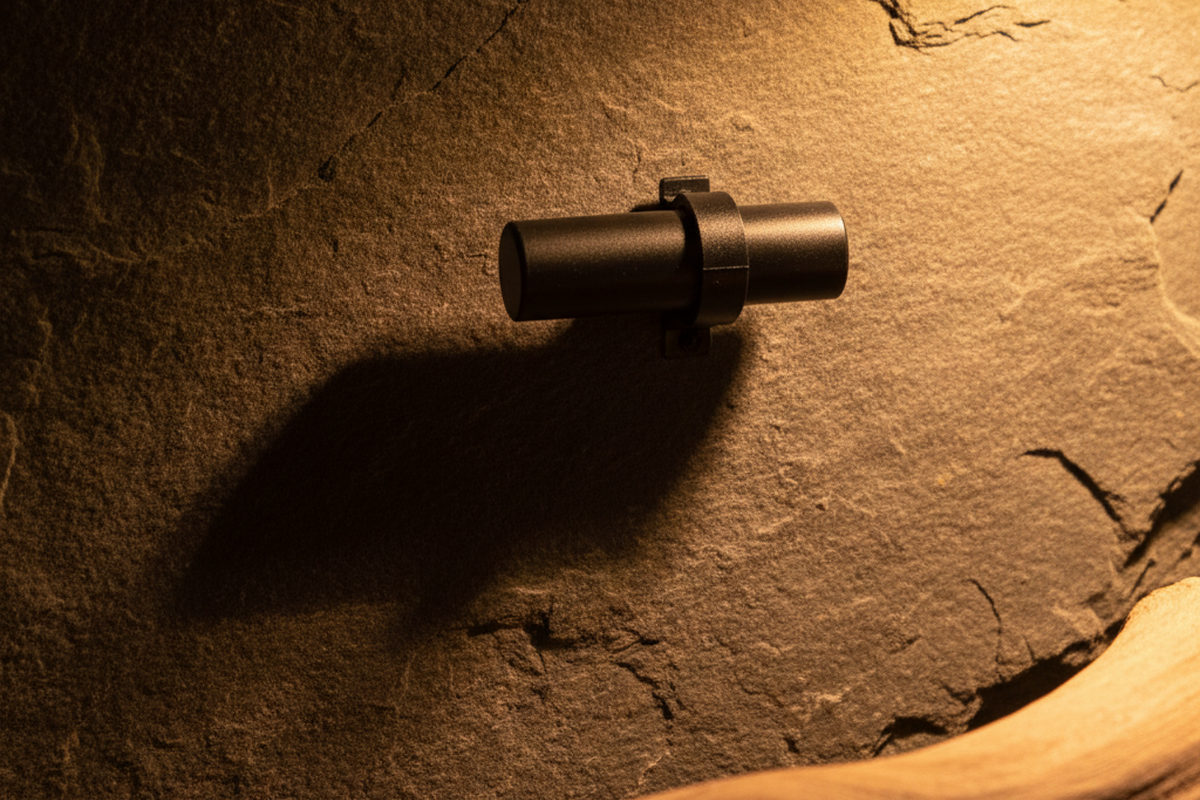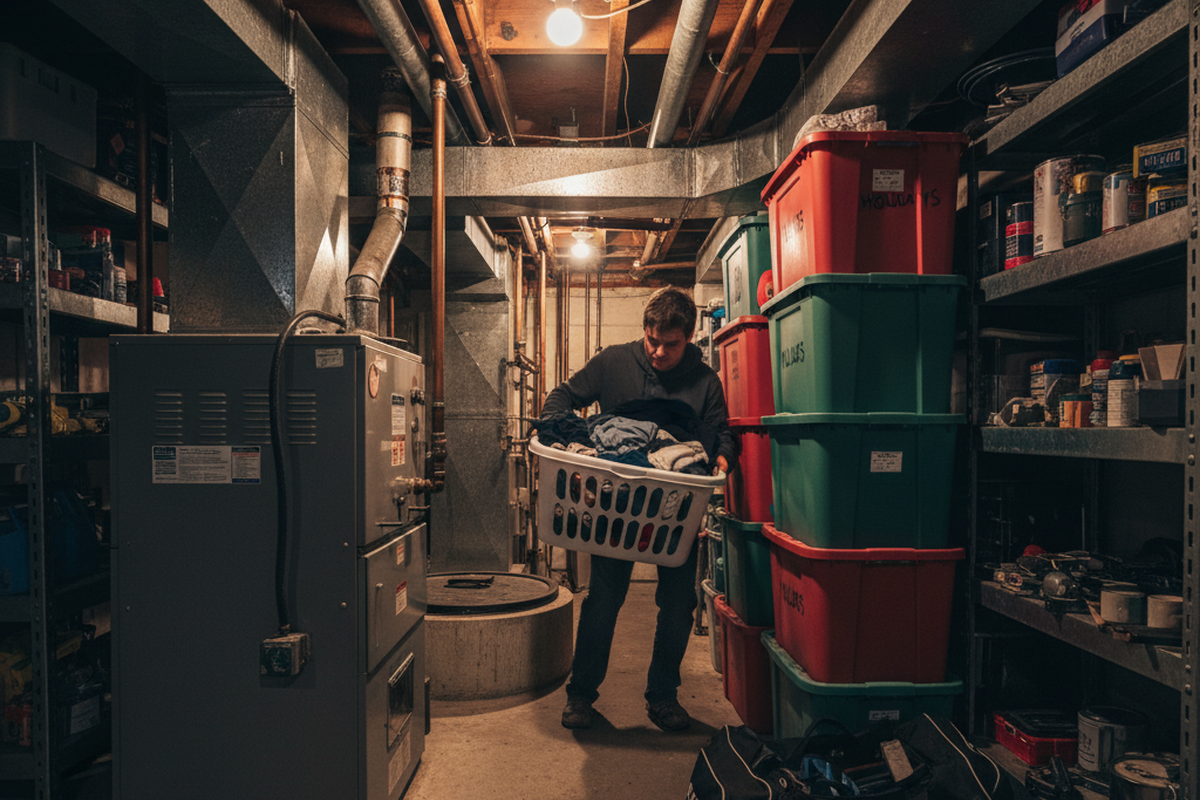The vacation rental industry is experiencing a significant shift as travelers increasingly seek accommodations that align with their values of environmental responsibility. Sustainable and energy-efficient vacation rentals are no longer a niche market but a growing demand, offering both environmental and economic benefits. This comprehensive guide will equip you with the knowledge and strategies to create and manage a vacation rental that minimizes its environmental impact while enhancing guest experience and profitability.
Contents
- Energy Efficiency Essentials
- Advanced Energy-Saving Tech
- Water Conservation Strategies
- Economic Benefits of Sustainable Rentals
- Engaging Guests: Education & Marketing
Energy Efficiency Essentials
Implementing fundamental energy efficiency measures is the first step towards creating a sustainable vacation rental. These measures not only reduce energy consumption and costs but also contribute to a more comfortable and environmentally conscious guest experience. Let’s explore some key areas where you can make a significant impact.
Lighting & Appliances
Upgrade to LED or CFL Lighting
Traditional incandescent bulbs are highly inefficient, converting only about 10% of the energy they consume into light, with the rest being wasted as heat. Switching to Light Emitting Diode (LED) or Compact Fluorescent Lamp (CFL) bulbs can significantly reduce energy usage. LEDs are the most energy-efficient option, using up to 80% less energy than incandescent bulbs and lasting up to 25 times longer. CFLs are also a good alternative, using about 75% less energy and lasting up to 10 times longer. While LEDs have a higher upfront cost, their longevity and energy savings quickly offset the initial investment. For example, replacing a 60-watt incandescent bulb with a 9-watt LED bulb can save you around $140 in energy costs over the bulb’s lifetime.
Install Motion Sensors and Timers
In areas like hallways, entryways, and outdoor spaces, where lights are often left on unnecessarily, installing motion sensors can ensure that lights are only activated when needed. Timers can also be used to automatically turn off lights after a certain period, preventing energy waste. For instance, installing a motion sensor in an outdoor pathway can prevent lights from being left on all night, saving energy and reducing light pollution.
Vacation rental owners looking for reliable and easy-to-install motion sensor solutions can explore the range of products offered by Rayzeek. Their motion sensor switches (RZ020/RZ021/RZ022/RZ023 series) are designed for various international electrical standards and offer different wiring options to suit diverse installation needs. For larger spaces or common areas, the Rayzeek RZ036 Ceiling Occupancy Sensor provides a discreet and effective way to automate lighting based on occupancy.
Get Inspired by Rayzeek Motion Sensor Portfolios.
Doesn't find what you want? Don't worry. There are always alternate ways to solve your problems. Maybe one of our portfolios can help.
Choose ENERGY STAR Appliances
The ENERGY STAR program, a joint initiative of the U.S. Environmental Protection Agency and the U.S. Department of Energy, certifies appliances that meet strict energy efficiency standards. When purchasing new appliances for your vacation rental, such as refrigerators, dishwashers, washing machines, and dryers, opting for ENERGY STAR-rated models can significantly reduce energy consumption and utility bills. For example, an ENERGY STAR-rated refrigerator can use up to 40% less energy than a standard model.
Consider HE Washer and Dryer Combos
HE washer and dryer combos are designed to use less water and energy compared to traditional models. They often incorporate features like moisture sensors in the dryer, which automatically shut off the cycle when clothes are dry, preventing over-drying and saving energy. These combos are particularly beneficial in vacation rentals where laundry usage can be high due to frequent guest turnovers.
HVAC & Insulation
Maintaining a comfortable temperature for your guests is essential, but it can also be a major source of energy consumption. By focusing on HVAC optimization and insulation, you can significantly reduce energy waste while ensuring guest comfort.
Implement Programmable Thermostats
Programmable thermostats allow you to set different temperature schedules based on occupancy. For example, you can program the thermostat to automatically lower the temperature when the rental is unoccupied and raise it before guests arrive, ensuring comfort while minimizing energy waste. Some advanced models even offer remote control capabilities, allowing you to adjust the temperature from your smartphone or tablet.
Improve Insulation and Install Energy-Efficient Windows
Proper insulation and energy-efficient windows are crucial in maintaining desired temperatures and reducing energy waste. Insulation prevents heat loss in the winter and heat gain in the summer, reducing the workload on the HVAC system. Energy-efficient windows, such as double-paned or triple-paned windows with low-E coatings, minimize heat transfer through the glass, further improving energy efficiency. For example, upgrading to energy-efficient windows can reduce heating and cooling costs by up to 15%.
Conduct Regular HVAC Maintenance
Regular maintenance, including cleaning or replacing air filters, checking refrigerant levels, and ensuring proper airflow, can significantly improve the efficiency of HVAC systems. A well-maintained system operates more smoothly, consumes less energy, and has a longer lifespan. It is recommended to have HVAC systems professionally serviced at least once a year.
For even greater energy savings, consider incorporating a motion sensor solution like the Rayzeek RZ050 Air Conditioner Motion Sensor. This device can automatically turn off the air conditioner when the room is unoccupied for a set period, preventing unnecessary energy consumption while guests are away.
Energy Management
Taking a proactive approach to energy management can help you identify areas for improvement and track the effectiveness of your energy-saving efforts.
Perform an Energy Audit
An energy audit is a comprehensive assessment of a building’s energy consumption patterns. It identifies areas where energy is being wasted and provides recommendations for improvements. A professional energy auditor can use specialized tools to detect air leaks, assess insulation levels, and analyze appliance efficiency. The audit report can help you prioritize energy-saving upgrades and make informed decisions about investments.
Educate Guests on Energy-Saving Practices
Guests can play a significant role in reducing energy consumption during their stay. Providing clear instructions and gentle reminders can encourage them to adopt energy-saving behaviors. For example, you can include information in the welcome book or guest guide on how to use the programmable thermostat, turn off lights when leaving a room, and unplug electronic devices when not in use. You can also consider placing small signs near light switches or appliances as gentle reminders.
Advanced Energy-Saving Tech
Beyond the fundamental energy efficiency measures, incorporating advanced technologies and renewable energy sources can further enhance the sustainability of your vacation rental. These technologies offer significant long-term energy savings and can attract environmentally conscious travelers.
Renewable Energy
Install Solar Panels
Solar panels convert sunlight into electricity, reducing reliance on fossil fuels and lowering electricity costs. The cost of solar panel installation has decreased significantly in recent years, making it a more accessible option for vacation rental owners. Many regions also offer financial incentives, such as tax credits and rebates, to encourage solar adoption. For example, the federal solar tax credit allows you to deduct a percentage of the cost of installing a solar energy system from your federal taxes.
Consider Wind Turbines
Wind turbines harness the power of wind to generate electricity. They are particularly suitable for properties located in areas with consistent wind speeds. While wind turbines can be a more expensive investment than solar panels, they can generate electricity even when the sun isn’t shining, providing a more consistent source of renewable energy.
Explore Geothermal Systems
Geothermal systems utilize the constant temperature of the earth to provide heating and cooling. They are highly efficient and can significantly reduce energy consumption compared to traditional HVAC systems. However, geothermal systems require a significant upfront investment and are not suitable for all locations, as they depend on the geological conditions of the property.
Smart Home Integration
Leveraging smart home technology can provide you with greater control over energy consumption and enhance the guest experience.
Implement IEMS
Integrated energy management systems (IEMS) provide centralized control and monitoring of energy consumption in a building. They can automatically adjust heating, cooling, and lighting based on occupancy, weather conditions, and energy prices, optimizing overall energy use. IEMS can also provide real-time data on energy consumption, allowing you to identify areas for improvement and track the effectiveness of energy-saving measures.
Use Advanced Occupancy Sensors and AI
Advanced occupancy sensors can detect the presence of guests in a room and automatically adjust lighting and temperature settings accordingly. AI-powered systems can learn guest preferences and optimize energy usage based on their behavior patterns. For example, the system can learn that a guest prefers a cooler temperature at night and automatically adjust the thermostat accordingly.
Install Smart Power Strips & Energy Monitors
Smart power strips automatically cut power to electronic devices when they are not in use, reducing standby power consumption. Similarly, Rayzeek’s Motion Sensor Plugs offer a convenient way to control appliances and lighting based on motion detection. These plugs can be easily integrated into any outlet and provide automated on/off functionality, further minimizing energy waste. Energy monitoring devices provide real-time data on energy usage, allowing you to track consumption patterns and identify areas where energy is being wasted. This information can help you make informed decisions about energy-saving upgrades and educate guests on their energy usage.
Innovative Energy Solutions
Exploring innovative solutions can further optimize energy efficiency in your vacation rental.
Install Tankless or Heat Pump Water Heaters
Tankless water heaters only heat water on demand, eliminating the energy wasted by traditional tank-style heaters that constantly maintain a hot water supply. Heat pump water heaters are even more efficient, using electricity to move heat from the surrounding air or ground into the water, rather than directly generating heat. These technologies can significantly reduce the energy required for water heating.
Integrate IoT Devices
IoT devices, such as smart thermostats, smart lighting systems, and smart appliances, can be interconnected and controlled remotely through a central hub or mobile app. This allows for comprehensive energy management and guest comfort optimization. For example, you can remotely adjust the thermostat, turn off lights, or monitor energy usage from your smartphone.
Implement ERV Systems
Energy recovery ventilation (ERV) systems exchange heat and moisture between incoming and outgoing air, reducing the energy required to heat or cool fresh air. They can maintain good indoor air quality while minimizing energy waste. ERV systems are particularly beneficial in climates with extreme temperature differences between indoors and outdoors.
Water Conservation Strategies
Water conservation is another crucial aspect of creating a sustainable vacation rental. Implementing water-saving measures not only reduces water consumption and costs but also contributes to preserving this precious resource.
Water-Efficient Fixtures
Upgrading to water-efficient fixtures is a simple yet effective way to conserve water in your vacation rental.
Install Low-Flow Fixtures
Low-flow fixtures are designed to reduce water flow without sacrificing performance. Low-flow faucets and showerheads use less water per minute compared to standard fixtures, while aerators mix air with the water stream, maintaining water pressure while reducing overall water usage. For example, replacing a standard showerhead with a low-flow model can save up to 2,700 gallons of water per year.
Use WaterSense Toilets or Dual-Flush Systems
WaterSense is a program similar to ENERGY STAR, certifying water-efficient plumbing products. WaterSense-labeled toilets use significantly less water per flush compared to standard toilets. Dual-flush toilets offer two flushing options – a low-volume flush for liquid waste and a full flush for solid waste – further reducing water consumption. For example, replacing a standard toilet with a WaterSense-labeled model can save up to 13,000 gallons of water per year.
Consider Replacing Bathtubs with Showers
Bathtubs typically use significantly more water than showers. Replacing a bathtub with a water-efficient shower can reduce water consumption, especially if guests tend to take long baths. You can further enhance water savings by installing a low-flow showerhead.
Maybe You Are Interested In
Landscaping & Outdoor Water Use
Managing outdoor water use efficiently is essential, especially in drier climates.
Implement Xeriscaping & Use Native Plants
Xeriscaping is a landscaping technique that focuses on using drought-tolerant plants and minimizing water usage. Native plants are adapted to the local climate and require less water compared to non-native species. By implementing xeriscaping and choosing native plants, you can create an attractive landscape that requires minimal watering, reducing water consumption and maintenance costs.
Install Smart Irrigation Controllers
Smart irrigation controllers adjust watering schedules based on weather conditions, soil moisture levels, and plant type. They can automatically skip watering cycles if it has rained recently or if the soil is already moist, preventing overwatering and saving water. Some models even integrate with local weather forecasts for more precise watering schedules.
Consider Rainwater Harvesting
Rainwater harvesting systems collect and store rainwater for non-potable uses, such as landscape irrigation or toilet flushing. These systems can reduce reliance on municipal water supplies and conserve water. Rainwater harvesting is particularly beneficial in areas with frequent rainfall.
Advanced Water Management
Implementing advanced water management techniques can further optimize water conservation in your vacation rental.
Install Smart Leak Detection
Smart leak detection systems use sensors to monitor water flow and pressure. They can detect leaks in pipes, fixtures, or appliances and send alerts to your smartphone or tablet, allowing you to address leaks promptly and prevent water waste. Some systems can even automatically shut off the water supply in case of a major leak.
Implement Greywater Recycling
Greywater is wastewater from sources like showers, sinks, and washing machines that does not contain human waste. Greywater recycling systems treat and reuse greywater for non-potable purposes, such as landscape irrigation or toilet flushing. These systems can significantly reduce water consumption and reliance on municipal water supplies.
Use Water Monitoring Devices
Water monitoring devices track water usage in real-time, providing data on consumption patterns and identifying areas for improvement. This information can help you make informed decisions about water-saving upgrades and educate guests on their water usage.
Guest Engagement
Encouraging guest participation in water conservation efforts can significantly enhance your overall sustainability impact.
Encourage Guest Participation
Guests can contribute to water conservation by adopting simple practices during their stay. Providing clear instructions and gentle reminders can encourage them to take shorter showers, turn off the faucet while brushing their teeth, and report any leaks they may notice. You can include information on water conservation in the welcome book or guest guide.
Offer Incentives for Water Conservation
Consider offering incentives, such as discounts on future bookings or small gifts, to guests who actively participate in water conservation efforts. This can motivate guests to be more mindful of their water usage and contribute to the sustainability of your vacation rental.
Economic Benefits of Sustainable Rentals
Investing in energy efficiency and sustainability for your vacation rental offers significant economic benefits, beyond the environmental advantages. These benefits can enhance your profitability, attract more guests, and increase the value of your property.
Direct Cost Savings
Reduce Utility Bills
Energy-efficient appliances, renewable energy sources, and water conservation measures can significantly reduce your utility bills. For example, upgrading to ENERGY STAR-rated appliances can save you hundreds of dollars per year on electricity costs. Installing solar panels can potentially eliminate your electricity bill altogether, depending on your energy consumption and the size of your solar system.
Lower Maintenance Costs
Energy-efficient upgrades often involve replacing older, less efficient equipment with newer, more durable models. This can lead to reduced maintenance costs and extended equipment lifespan. For example, a high-efficiency HVAC system requires less maintenance and is likely to last longer than an older, inefficient system.
Benefit from Incentives
Many regions offer financial incentives, such as tax credits, rebates, and grants, to encourage energy efficiency and renewable energy adoption. These incentives can significantly reduce the upfront cost of implementing sustainable upgrades. For example, the federal solar tax credit can offset a significant portion of the cost of installing solar panels.
Market Advantages
Sustainability can be a powerful marketing tool for your vacation rental.
Capitalize on Market Demand
The demand for sustainable accommodations is rapidly growing, with more and more travelers seeking eco-friendly options. By positioning your vacation rental as energy-efficient and sustainable, you can attract a larger pool of potential guests and increase your bookings. Studies have shown that travelers are willing to pay a premium for sustainable accommodations.
Justify Premium Rates
Energy-efficient and sustainable features can justify charging premium rates for your vacation rental. Guests are often willing to pay more for accommodations that align with their values and offer a lower environmental impact. You can also highlight the cost savings associated with energy efficiency, such as lower utility bills, as a justification for higher rates.
Gain a Competitive Edge
In a competitive vacation rental market, sustainability can be a key differentiator. By showcasing your commitment to energy efficiency and environmental responsibility, you can stand out from the competition and attract eco-conscious travelers. This can lead to increased bookings, positive reviews, and enhanced brand reputation.
Long-term Investment Value
Sustainable upgrades can enhance the long-term value of your vacation rental property.
Increase Property Value
Sustainable features and energy-efficient upgrades can increase the market value of your vacation rental property. Buyers and investors are increasingly valuing properties that are environmentally friendly and have lower operating costs. Energy-efficient upgrades can also improve the energy efficiency rating of your property, making it more attractive to potential buyers.
Improve Occupancy & Guest Satisfaction
Energy-efficient and sustainable accommodations can contribute to higher occupancy rates and guest satisfaction. Guests appreciate staying in properties that are comfortable, environmentally conscious, and have lower operating costs. This can lead to positive reviews, repeat bookings, and increased word-of-mouth referrals.
Prepare for Future Regulations
Environmental regulations are becoming increasingly stringent in many regions. By investing in energy efficiency and sustainability now, you can position your vacation rental for future regulatory compliance and avoid potential penalties or costly upgrades down the line. You will also be ahead of the curve in terms of market trends, as sustainability continues to gain importance in the vacation rental industry.
Looking For Motion-Activated Energy-Saving Solutions?
Contact us for complete PIR motion sensors, motion-activated energy-saving products, motion sensor switches, and Occupancy/Vacancy commercial solutions.
Engaging Guests: Education & Marketing
Engaging guests in your sustainability efforts can enhance their experience, contribute to further energy and water savings, and strengthen your brand reputation. By educating guests about your eco-friendly initiatives and encouraging their participation, you can create a more sustainable and impactful vacation rental experience.
Pre-arrival Communication
Setting the stage for sustainability before guests even arrive can make a big difference.
Showcase Sustainable Features in Marketing
Highlight your property’s sustainable features in your marketing materials, website, and listing descriptions. Mention energy-efficient appliances, renewable energy sources, water conservation measures, and any other eco-friendly initiatives you have implemented. Use high-quality photos and videos to showcase these features visually.
Utilize Sustainability Badges
Many listing platforms offer sustainability badges or eco-certifications that you can display on your property listing. These badges signal to potential guests that your vacation rental is committed to environmental responsibility. Consider obtaining relevant certifications, such as LEED (Leadership in Energy and Environmental Design) or Green Globe, to further enhance your credibility.
Provide Pre-arrival Info on Sustainability
Send guests pre-arrival information about your property’s sustainability efforts and what they can expect during their stay. Explain your energy and water conservation policies, provide tips on how they can contribute, and highlight any unique eco-friendly features of your rental.
On-site Education
Continuing the conversation about sustainability on-site can reinforce your message and encourage guest participation.
Create an Eco-Friendly Welcome Pack
Provide guests with an eco-friendly welcome pack or digital guide that contains information on the property’s sustainable features and energy-saving tips. You can include details on how to use the programmable thermostat, how to operate water-efficient fixtures, and how to recycle properly. You can also provide information on sustainable local activities, transportation options, and eco-friendly businesses in the area.
Use Reminders Throughout the Property
Place gentle reminders and clear instructions throughout the property to encourage energy-saving behaviors. For example, you can place a small sign near light switches reminding guests to turn off lights when leaving a room. You can also provide instructions on how to use the dishwasher or washing machine efficiently.
Provide Info on Sustainable Local Activities
Encourage guests to explore the local area in a sustainable way by providing information on public transportation, bike rentals, walking trails, and eco-friendly tours. You can also recommend local businesses that prioritize sustainability, such as restaurants that source local ingredients or shops that sell eco-friendly products.
Technology-Enabled Engagement
Technology can play a key role in educating and engaging guests in your sustainability efforts.
Use Digital Tools to Provide Energy Usage Info
Utilize digital communication tools, such as guest apps or smart home interfaces, to provide guests with real-time information on their energy usage. You can also send them personalized tips on how to reduce their consumption. Some smart home systems allow guests to track their energy usage and compare it to previous guests or average usage data.
Implement Gamification
Consider incorporating gamification elements to make energy conservation more fun and engaging for guests. For example, you can create a friendly competition among guests to see who can save the most energy during their stay. You can also offer rewards or discounts to guests who achieve certain energy-saving goals.
Post-stay Feedback & Improvement
Gathering feedback and continuously improving your sustainability efforts is crucial for long-term success.
Implement a Guest Feedback System
Collect guest feedback on your eco-friendly initiatives through surveys or online reviews. Ask guests about their experience with your sustainability efforts, what they found helpful, and what could be improved. This feedback can help you refine your strategies and ensure that you are meeting the needs and expectations of your guests.
Offer Incentives for Participation
Consider offering incentives or rewards to guests who actively participate in energy-saving practices during their stay. This can motivate guests to be more mindful of their energy consumption and contribute to the sustainability of your vacation rental.
Use Guest Feedback to Refine Efforts
Continuously analyze guest feedback to identify areas where you can improve your sustainability efforts and communication strategies. Use this feedback to make adjustments to your practices, refine your messaging, and enhance the overall guest experience.
By implementing the strategies outlined in this guide, you can create a sustainable and energy-efficient vacation rental that minimizes its environmental impact, enhances guest experience, and improves your profitability. As the demand for eco-friendly accommodations continues to grow, investing in sustainability is not only the right thing to do for the planet but also a smart business decision.

